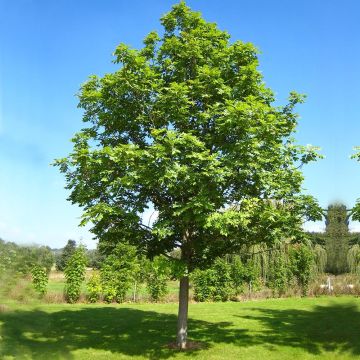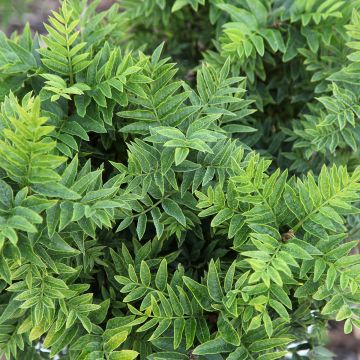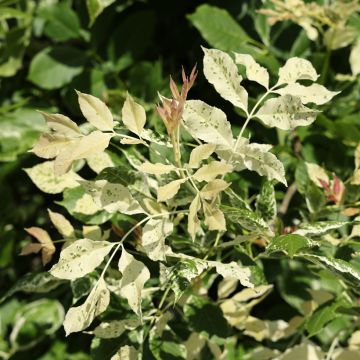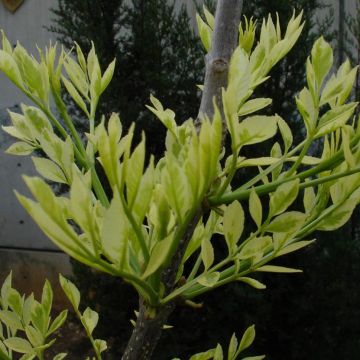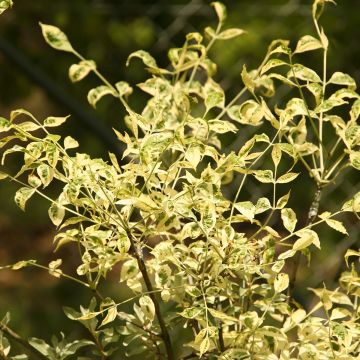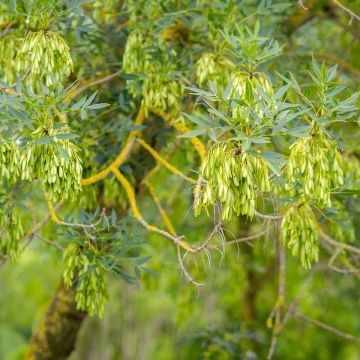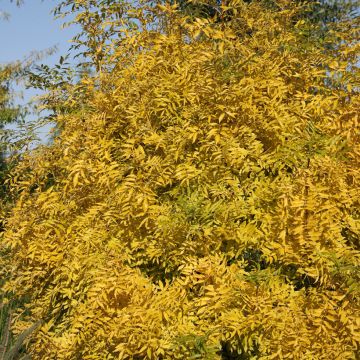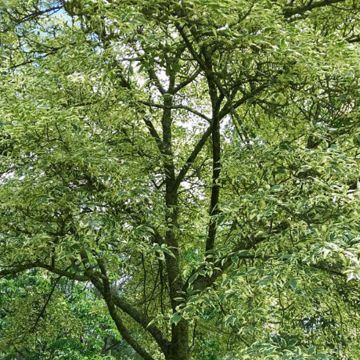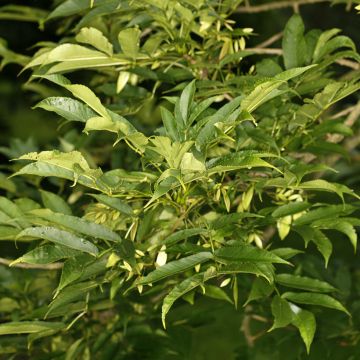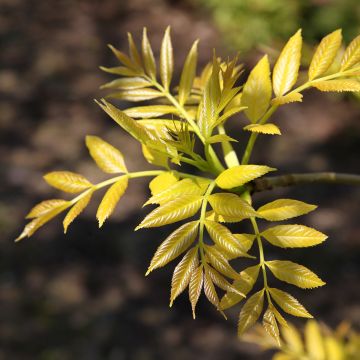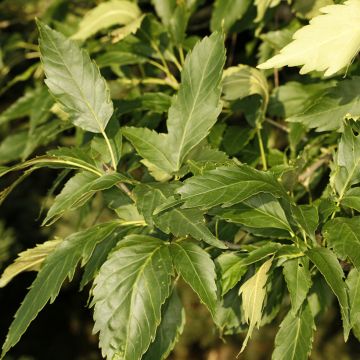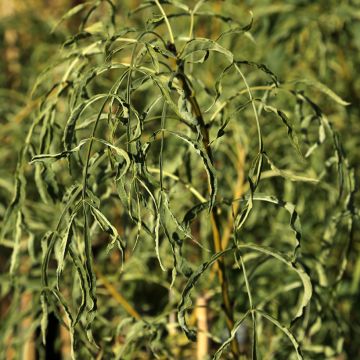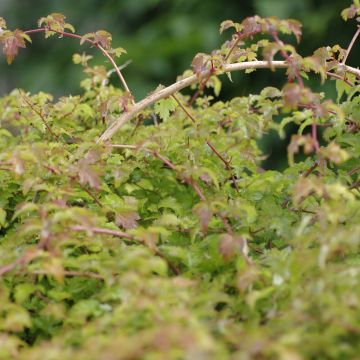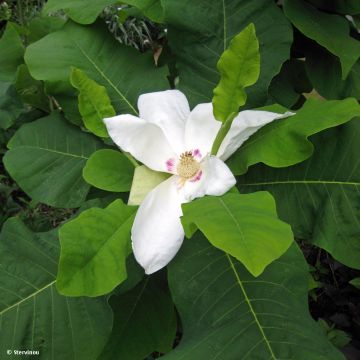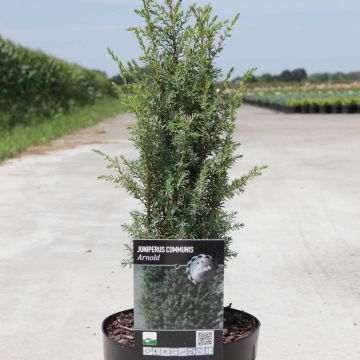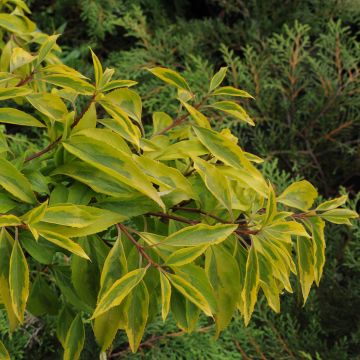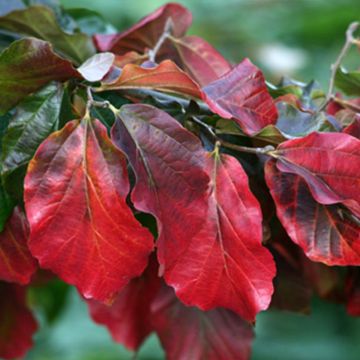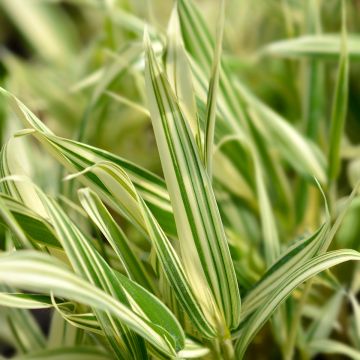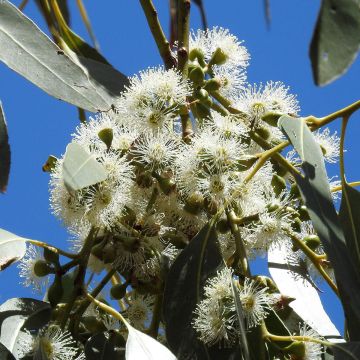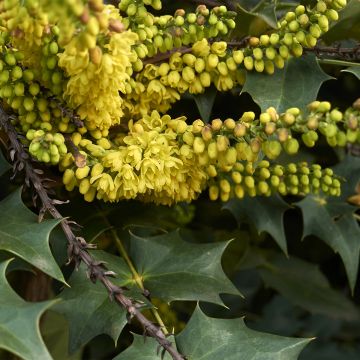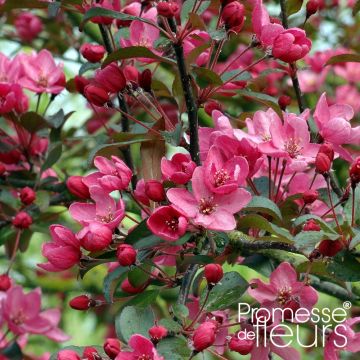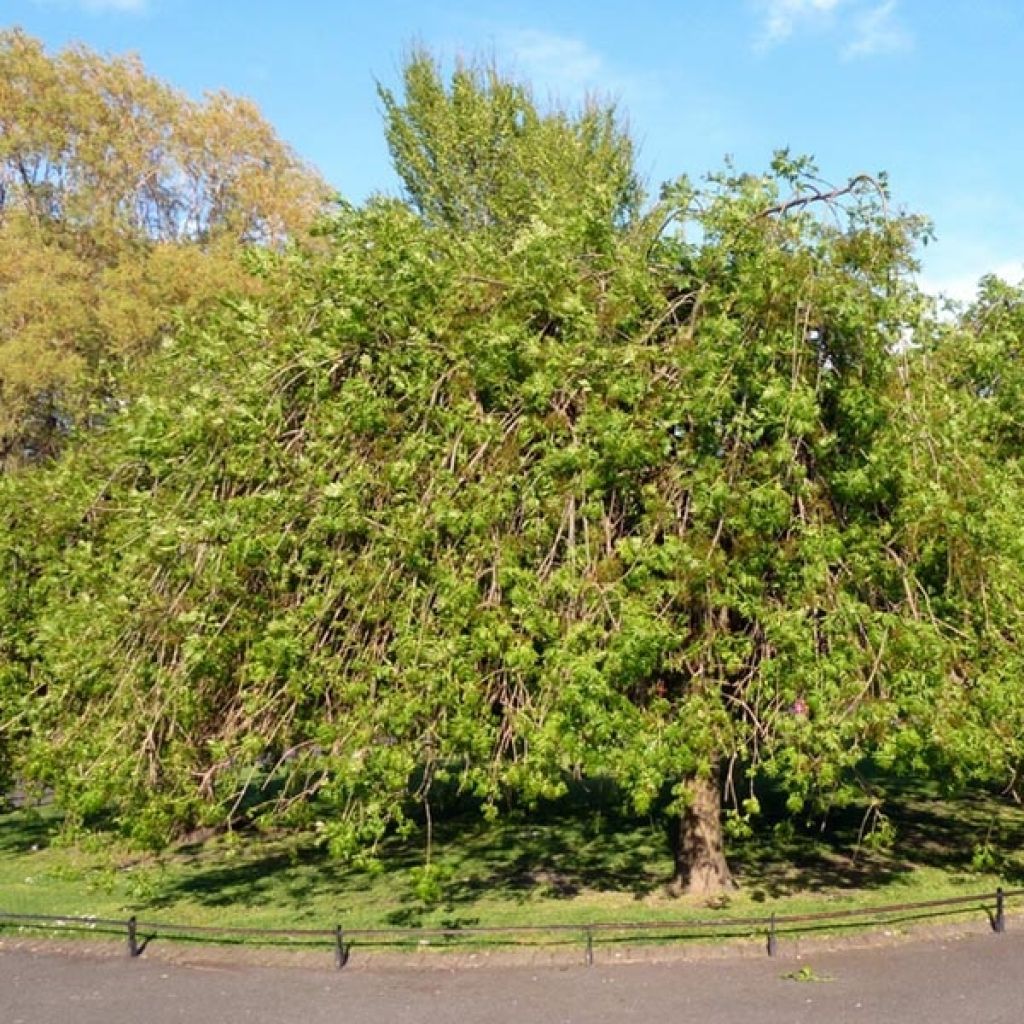

Fraxinus excelsior Pendula - Ash
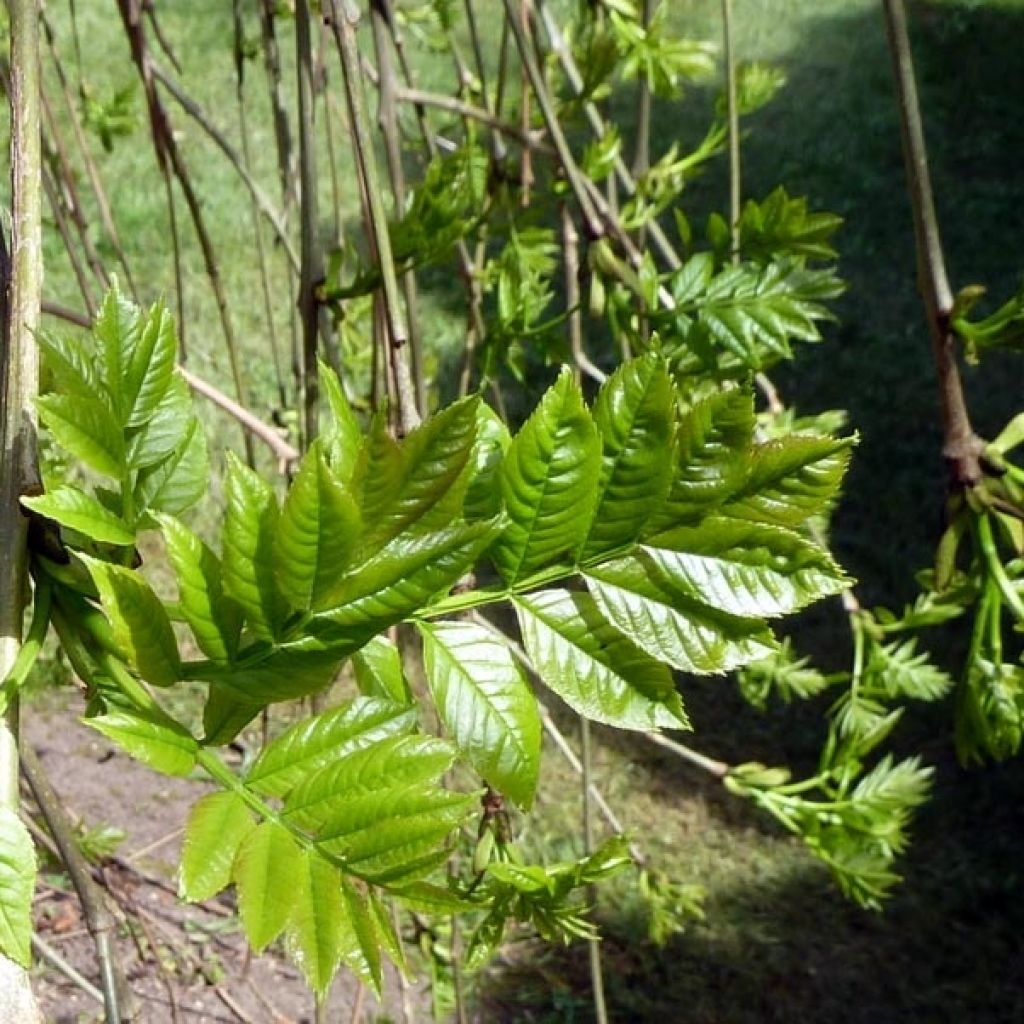

Fraxinus excelsior Pendula - Ash
Fraxinus excelsior Pendula - Ash
Fraxinus excelsior Pendula
Weeping Ash
Why not try an alternative variety in stock?
View all →This plant carries a 24 months recovery warranty
More information
We guarantee the quality of our plants for a full growing cycle, and will replace at our expense any plant that fails to recover under normal climatic and planting conditions.
Oversize package: home delivery by special carrier from €6.90 per order..
Express home delivery from €8.90.
Delivery to Corse prohibited: UE law prohibits the import of this plant from mainland France to Corse as part of the fight against Xylella fastidiosa. Please accept our sincere apologies.
More information
Does this plant fit my garden?
Set up your Plantfit profile →
Description
Fraxinus excelsior 'Pendula', or the weeping ash, is a medium-sized tree, with branches that cascade down to the ground. Although smaller than the species, it is recognized as such by its dark brown velvety leaf buds and its compound leaves with lanceolate leaflets, dark green turning yellow in autumn. Rapid-growing ,this tree develops a spreading umbrella habit, composed of a very vertical trunk supporting a weeping canopy that provides shade in summer. Very resistant to cold, easy to grow in any deep and moist soil, it will look great as a specimen tree or by the edge of a water feature.
Fraxinus excelsior, commonly known as the common ash or European ash, is a tree of the olive family, just like lilac. It is native to Europe, Scandinavia, and Russia, where it is common on riverbanks and shores, as well as in forests.
The cultivar 'Pendula', obtained in the 19th century, has a weeping habit. It develops a vertical trunk, which becomes hidden over the years behind a curtain of cascading branches, reaching down to the ground. With time, the crown becomes more spreading and the bark covering the trunk turns grey, deeply fissured, and scaly. It has a rather fast growth, usually reaching between 10 and 15 m (32 ft 10 in and 49 ft 2 in) in height and 10 m (32 ft 10 in) in spread at maturity. The deciduous delicate foliage, consists of compound leaves with 9 to 13 very narrow and lanceolate leaflets, measuring 5 to 12 cm (2 to 4.7 in) long. Dark green in colour, these leaves turn yellow in autumn. The tree flowers appear in spring before the leaves, with yellow-cream panicles. After pollination, they give way to 2 to 4.5 cm (0.8 to 1.8 in) long samaras.
Perfectly hardy and with limited requirements, the common ash 'Pendula' tolerates and adapts to most light conditions and any ordinary soil, including limestone, although its growth will be greater in fertile, deep and moist soil. It tolerates pruning very well, even severe pruning, as it produces new shoots from the stump. Its elegant weeping foliage and habit give it true ornamental qualities. Perfect as a specimen tree in a large garden, where it will provide pleasant shade in summer.
Report an error about the product description
Fraxinus excelsior Pendula - Ash in pictures
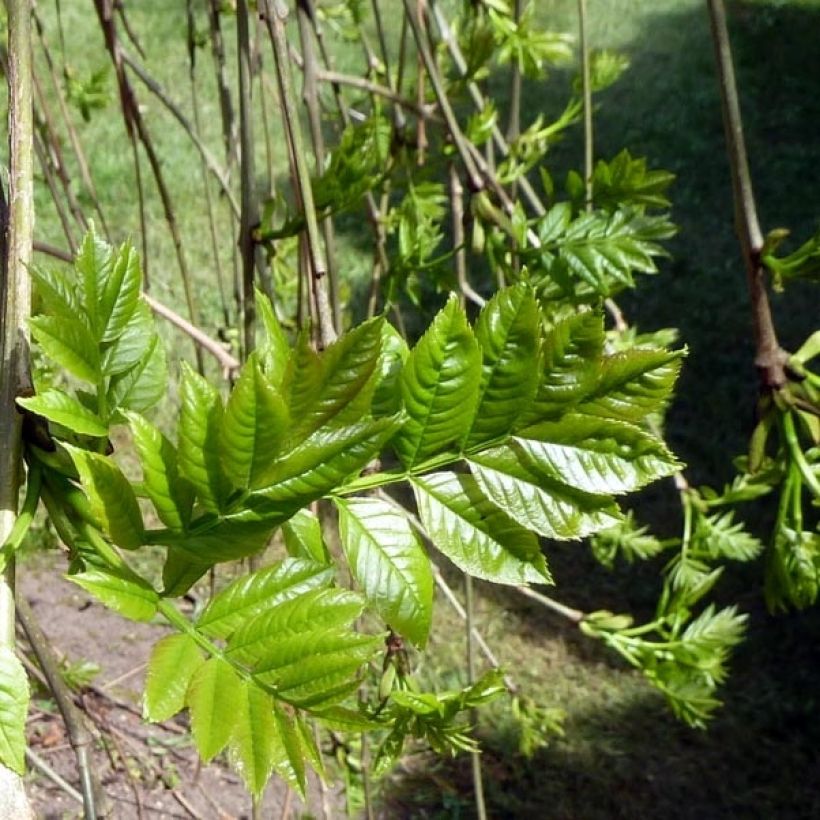

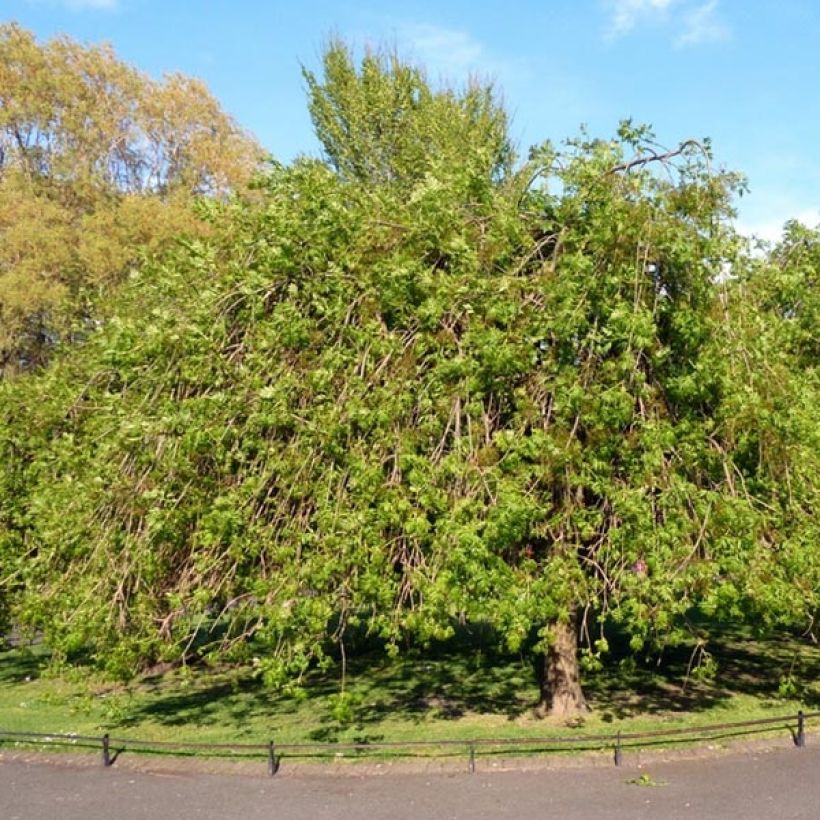

Plant habit
Flowering
Foliage
Safety measures
Botanical data
Fraxinus
excelsior
Pendula
Oleaceae
Weeping Ash
Cultivar or hybrid
atteinterespiratoire
Cette plante peut entraîner des symptômes allergiques.
Evitez de la planter si vous ou vos proches souffrez de rhinite saisonnière ("rhume des foins").
Davantage d'informations sur https://plantes-risque.info
Other Fraxinus - Ash tree
Planting and care
Plant Fraxinus excelsior 'Pendula' in autumn or spring, choose an open location, in non-scorching sunlight, where the soil is deep and keep in mind the space it will require in the long term. If necessary, create a drainage pit with stones if your soil is compacted. Adding leaf compost to the soil will be beneficial if your soil is poor. Maintain regular watering during the following summer after planting and make sure to protect the tree from prolonged droughts. Mulching can help keep the base cool and reduce the need for watering. It is important to remember that this riverside tree requires constantly moist soil. It is perfectly resistant to frost. Prune to balance the tree's shape every 3 years by thinning the centre of the canopy.
Planting period
Intended location
Care
This item has not been reviewed yet - be the first to leave a review about it.
Striking foliage shrubs
Haven't found what you were looking for?
Hardiness is the lowest winter temperature a plant can endure without suffering serious damage or even dying. However, hardiness is affected by location (a sheltered area, such as a patio), protection (winter cover) and soil type (hardiness is improved by well-drained soil).

Photo Sharing Terms & Conditions
In order to encourage gardeners to interact and share their experiences, Promesse de fleurs offers various media enabling content to be uploaded onto its Site - in particular via the ‘Photo sharing’ module.
The User agrees to refrain from:
- Posting any content that is illegal, prejudicial, insulting, racist, inciteful to hatred, revisionist, contrary to public decency, that infringes on privacy or on the privacy rights of third parties, in particular the publicity rights of persons and goods, intellectual property rights, or the right to privacy.
- Submitting content on behalf of a third party;
- Impersonate the identity of a third party and/or publish any personal information about a third party;
In general, the User undertakes to refrain from any unethical behaviour.
All Content (in particular text, comments, files, images, photos, videos, creative works, etc.), which may be subject to property or intellectual property rights, image or other private rights, shall remain the property of the User, subject to the limited rights granted by the terms of the licence granted by Promesse de fleurs as stated below. Users are at liberty to publish or not to publish such Content on the Site, notably via the ‘Photo Sharing’ facility, and accept that this Content shall be made public and freely accessible, notably on the Internet.
Users further acknowledge, undertake to have ,and guarantee that they hold all necessary rights and permissions to publish such material on the Site, in particular with regard to the legislation in force pertaining to any privacy, property, intellectual property, image, or contractual rights, or rights of any other nature. By publishing such Content on the Site, Users acknowledge accepting full liability as publishers of the Content within the meaning of the law, and grant Promesse de fleurs, free of charge, an inclusive, worldwide licence for the said Content for the entire duration of its publication, including all reproduction, representation, up/downloading, displaying, performing, transmission, and storage rights.
Users also grant permission for their name to be linked to the Content and accept that this link may not always be made available.
By engaging in posting material, Users consent to their Content becoming automatically accessible on the Internet, in particular on other sites and/or blogs and/or web pages of the Promesse de fleurs site, including in particular social pages and the Promesse de fleurs catalogue.
Users may secure the removal of entrusted content free of charge by issuing a simple request via our contact form.
The flowering period indicated on our website applies to countries and regions located in USDA zone 8 (France, the United Kingdom, Ireland, the Netherlands, etc.)
It will vary according to where you live:
- In zones 9 to 10 (Italy, Spain, Greece, etc.), flowering will occur about 2 to 4 weeks earlier.
- In zones 6 to 7 (Germany, Poland, Slovenia, and lower mountainous regions), flowering will be delayed by 2 to 3 weeks.
- In zone 5 (Central Europe, Scandinavia), blooming will be delayed by 3 to 5 weeks.
In temperate climates, pruning of spring-flowering shrubs (forsythia, spireas, etc.) should be done just after flowering.
Pruning of summer-flowering shrubs (Indian Lilac, Perovskia, etc.) can be done in winter or spring.
In cold regions as well as with frost-sensitive plants, avoid pruning too early when severe frosts may still occur.
The planting period indicated on our website applies to countries and regions located in USDA zone 8 (France, United Kingdom, Ireland, Netherlands).
It will vary according to where you live:
- In Mediterranean zones (Marseille, Madrid, Milan, etc.), autumn and winter are the best planting periods.
- In continental zones (Strasbourg, Munich, Vienna, etc.), delay planting by 2 to 3 weeks in spring and bring it forward by 2 to 4 weeks in autumn.
- In mountainous regions (the Alps, Pyrenees, Carpathians, etc.), it is best to plant in late spring (May-June) or late summer (August-September).
The harvesting period indicated on our website applies to countries and regions in USDA zone 8 (France, England, Ireland, the Netherlands).
In colder areas (Scandinavia, Poland, Austria...) fruit and vegetable harvests are likely to be delayed by 3-4 weeks.
In warmer areas (Italy, Spain, Greece, etc.), harvesting will probably take place earlier, depending on weather conditions.
The sowing periods indicated on our website apply to countries and regions within USDA Zone 8 (France, UK, Ireland, Netherlands).
In colder areas (Scandinavia, Poland, Austria...), delay any outdoor sowing by 3-4 weeks, or sow under glass.
In warmer climes (Italy, Spain, Greece, etc.), bring outdoor sowing forward by a few weeks.

































